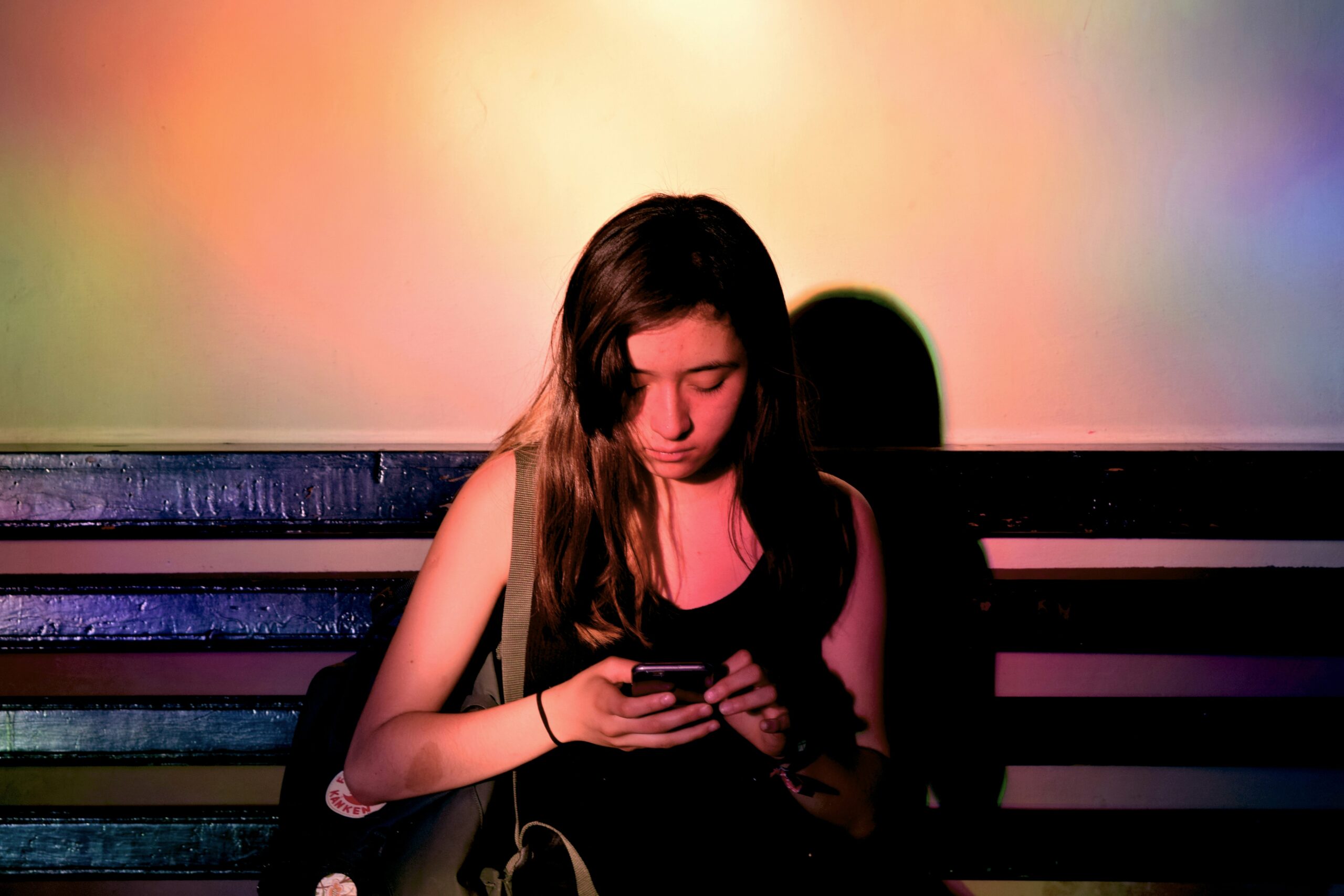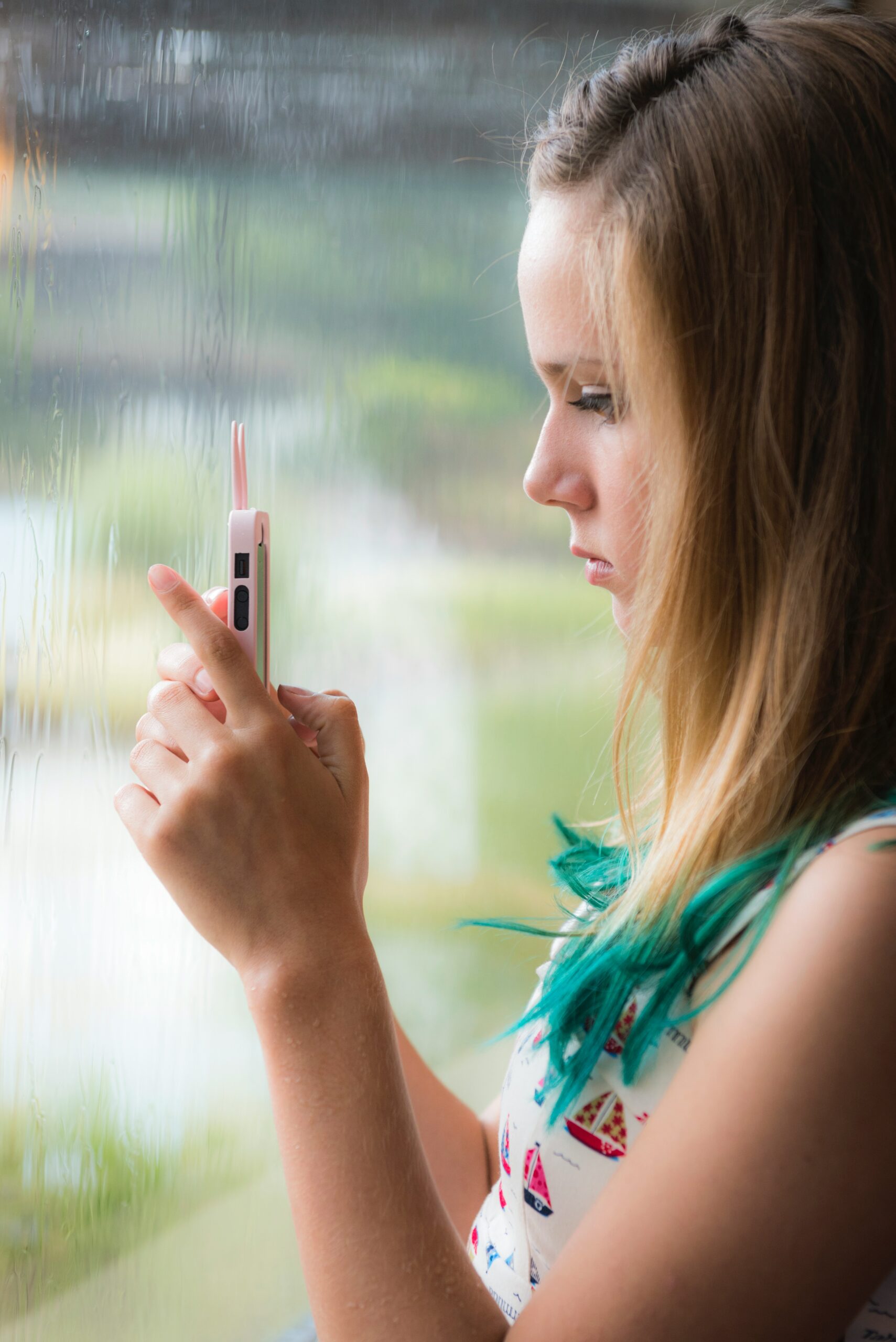The Negative Effects of Technology on Teens – and How to Help

Written by Aleena Hellebyuck, MA, CAADC-DP
Learn how social media, screen time, and online culture are shaping your teen’s emotional health and what you can do to help them build balance, resilience, and self-esteem in a digital world.
The Digital World Teens Are Growing Up In
Technology is woven into nearly every aspect of modern teenage life. From smartphones and social media to gaming and streaming platforms, adolescents are living in a world that’s always online. While digital tools provide connection and creativity, they can also contribute to anxiety, comparison, and overstimulation, all of which affect emotional well-being and development.
As a therapist, I often hear parents say, “I don’t even recognize my child anymore — they seem anxious, withdrawn, or distracted all the time.” Much of this shift reflects the mental load of growing up in an always-connected world.
The Hidden Pressure of Being “Always On”
Teens often feel an invisible pressure to stay connected to respond instantly, post regularly, and maintain a flawless image. The constant feedback loop of likes, comments, and shares keeps them seeking external validation.
Research from the American Psychological Association (APA, 2023) found that adolescents who spend more than three hours daily on social media are twice as likely to experience symptoms of depression and anxiety compared to peers with limited use. The brain’s reward pathways become conditioned to seek digital affirmation, reinforcing compulsive engagement and emotional volatility.

When Connection Turns Into Comparison
Adolescence is a critical period for identity development and self-esteem. Social media amplifies self-comparison by showcasing filtered, idealized versions of reality. Teens may know that images are edited, yet emotionally they still feel “less than.”
A 2022 Pew Research Center study found that 59% of teens feel pressure to look good on social media, while nearly half report feeling left out or inadequate after seeing peers’ posts. This emotional dissonance between logic and feeling often manifests as irritability, withdrawal, or sadness.
As one client put it, “I know people only post their best moments, but it still makes me feel like I’m not enough.”
The Role of Sleep and Screen Time
Sleep deprivation is one of the most underestimated consequences of tech overuse. The blue light from screens suppresses melatonin, while social media and gaming keep the brain alert. Teens who use their devices within an hour of bedtime are more likely to experience mood dysregulation, irritability, and poor academic performance (National Institutes of Health, 2021).
Simple boundaries such as keeping devices out of bedrooms and setting a nightly “digital sunset” significantly improve emotional regulation. Parents who model this behavior help normalize healthier boundaries.
Cyberbullying and Digital Disinhibition
Online environments lower inhibitions. Behind screens, empathy often diminishes. Cyberbullying has been linked to heightened risks of depression, suicidal ideation, and social isolation (Kowalski et al., 2021, Journal of Adolescent Health).
Many teens hide these experiences for fear that disclosure will result in punishment or phone confiscation. The most protective factor is open, judgment-free communication. Parents who respond with empathy rather than control foster safety and trust.

Technology and the Developing Brain
The adolescent brain is still developing the prefrontal cortex — the area responsible for impulse control and emotional regulation. Social media platforms exploit this vulnerability by rewarding novelty and attention-seeking. Each notification releases dopamine, reinforcing the cycle of compulsive checking (Harvard University, 2022).
Over time, this constant stimulation can reduce tolerance for boredom, disrupt attention, and heighten anxiety. Encouraging unplugged, offline experiences art, movement, time in nature helps retrain the brain for balance.
How Parents Can Support Healthy Tech Use
- Create structure, not punishment. Consistent boundaries like “no phones at meals” or “devices off one hour before bed” with an explanation, like “I want to talk to you and hear about what’s going on in your life” and “I’m concerned about the blue light of your phone making it difficult for you to fall asleep,” help teens learn balance without shame.
- Model mindful tech use. Teens imitate adults. When parents prioritize real-life connection, teens internalize those values.
- Encourage offline fulfillment. Hobbies, sports, and community involvement rebuild intrinsic motivation and self-esteem.
- Ask reflective questions. Try: “How does being online make you feel?” or “Do you ever feel pressure to post or respond right away?”
- Normalize breaks. Remind your teen that taking time away from screens is self-care, not punishment, and help him or her find ways to do that.
The Takeaway
Technology isn’t the enemy imbalance is. When used intentionally, digital tools can enhance learning, creativity, and connection. But without boundaries, they can hijack attention and self-worth.
Parents who combine curiosity, empathy, and structure help their teens build digital resilience learning to use technology as a tool rather than a trap. If your teen is showing signs of anxiety, mood swings, or disconnection related to tech use, therapy can help them rebuild confidence, identity, and balance.
Aleena Hellebyuck, MA, CAADC-DP is a limited license professional counselor with expertise in couples counseling, and individual therapy for adults and children. Contact us today at (248) 219-2548 or lena@drlenaagree.com to schedule a consultation with Aleena in Birmingham, MI.
References
Gottman, J. (2011). The Science of Trust: Emotional Attunement for Couples. W.W. Norton & Company.
American Psychological Association (2023). Teens, Social Media, and Mental Health. APA Press.
Harvard University (2022). Social Media and the Teenage Brain. Center for the Developing Child.
Kowalski, R. M., Limber, S. P., & McCord, A. (2021). A developmental approach to cyberbullying: Prevalence and protective factors. Journal of Adolescent Health, 68(2), 245–252.
National Institutes of Health (2021). Sleep, Screen Time, and Mental Health in Adolescents. NIH Research Matters.
Pew Research Center (2022). Teens, Social Media, and Technology 2022.